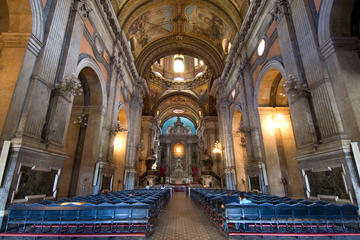Church of Our Lady of Candelaria
TIME : 2016/2/22 10:00:21

Church of Our Lady of Candelaria
Once the tallest structure in all of Rio de Janeiro, the Church of Our Lady of Candelaria, with its striking combination of Baroque, Neoclassical, and Neo-Renaissance design styles, has a marred history. In modern times, the cathedral is best known for the cold-blooded shootings by the police of a group of homeless children sleeping just outside the doors of the church in 1993. A decade earlier, the church played host to the funeral mass of teenager Edson Luis de Lima Souto, killed by police action during a peaceful protest against Brazil’s military dictatorship (which ruled the country from 1964-1985). Contemporary tragedies aside, the church holds a central place in the history of Rio and the hearts of its citizens.
First established by a group of Spanish settlers in 1609, after the near-sinking of their ship Candelaria in a storm, the church began as a small chapel. Construction started on the current edifice in 1775, continuing through the end of the colonial period and unfinished until 1877, when the Portuguese stone dome was installed, crowning the church and the entire city. The very next year, a redesign of the interior began, involving the covering of the austere stone walls with Italianate marble, and establishing the juxtaposition of the Neo-Renaissance design inside with the church’s Baroque exterior. To bring the cathedral into the 20th century, two bronze Art Nouveau pulpits were installed in 1931, adding a Modernist touch to this centuries-old masterpiece.
